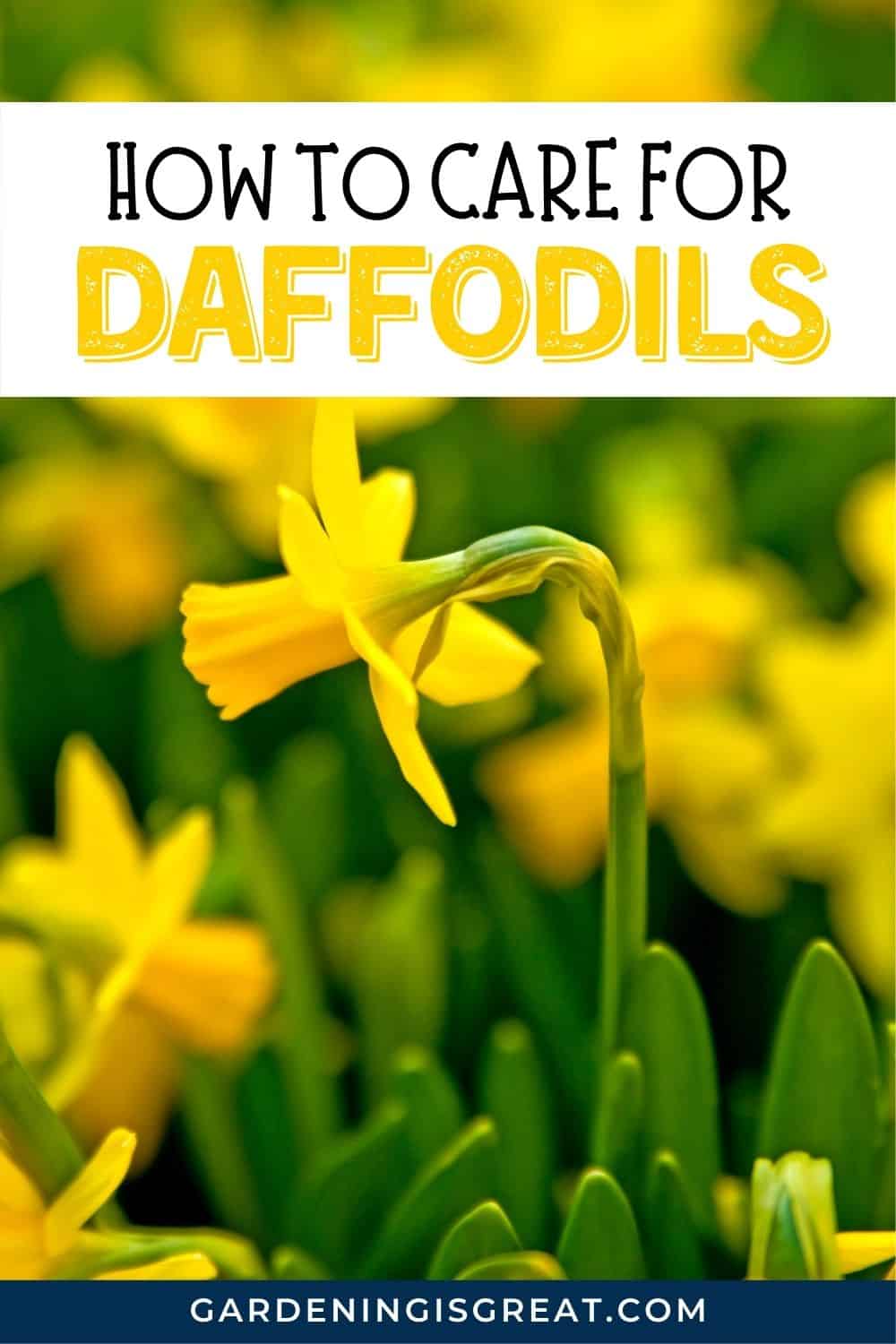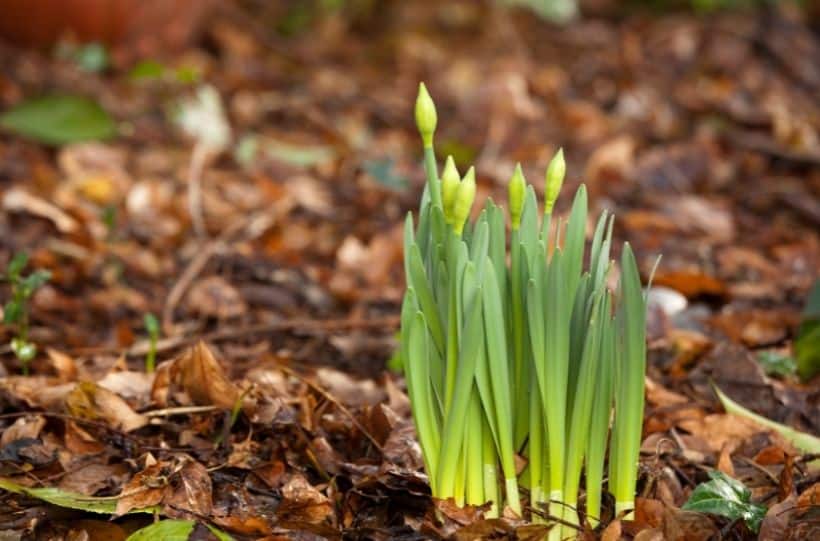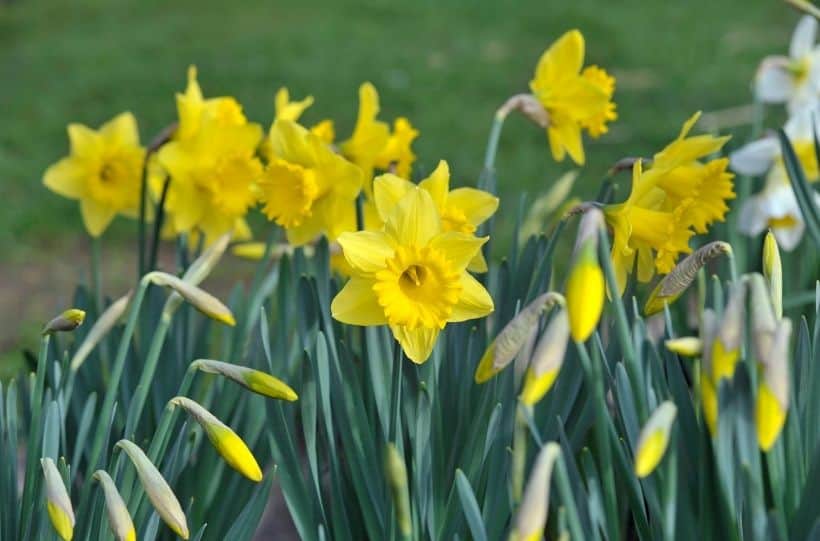How To Care For Daffodils: Daffodil Plant Care
When daffodils begin to sprout, it’s a sign that Spring is well and truly here. Their trumpet-like centers surrounded by delicate or white petals are a welcomed sight of early Spring.
Daffodils are an essential flower for many animals in Spring, particularly pollinators. They provide crucial nectar for pollinators early in the season when little food is available.
Daffodils are a popular choice of plant for many gardeners due to their ease of maintenance and early sprouting. Unlike many spring flowers, daffodils will sprout when it’s still relatively cold outside, just after the last frost.
But planting them at the right time of the year and ensuring to look after them properly is essential for a good flowering season. This post will take you through, step by step, how to care for daffodils so that they rebloom the following year.

About Daffodils
Daffodils are available in white, pale yellow, and bright yellow. They display around 6 large petals that surround a trumpet-shaped bright yellow center.
These flowers are grown from single bulbs planted early in the season. They can be found in shaded woodlands to full sunlit gardens.
As they are perennial bulbs, with the right care they will regrow each year.
When Should I Plant Daffodil Bulbs?
Depending upon the variety and location planted, daffodils start to bloom as early as January and late as April. To give your daffodil bulbs long enough to settle in the ground and produce roots, they need to be planted in the Autumn.
Find an area within your garden that you won’t accidentally dig up again, destroying your daffodil bulbs. The ground should be well-drained with fertile soil. Daffodils do prefer full to partial sunlight and will bloom best in these conditions.
Ensure to plant the bulbs with their pointed end up upwards and at a depth of at least three times the size of your bulbs. They can be grown closely together for a beautiful display. The daffodils will not bloom during Autumn, but during this time will focus on root growth and development. They then will be protected from the frost underground and will start sprouting when the temperature increases after winter.
How to Care For Daffodils Before They Bloom?
After planting, daffodils need support to help them bloom. Winter can be dry, so the soil around your bulbs will need watering regularly. If it continues to be dry, it is best to water your bulbs every few weeks.
If you choose to plant your daffodils in containers, they will need watering more regularly as the soil can dry out quicker.

To help minimize competition for your daffodils from Autumn to Spring, it is best to add a thick layer of mulch to your soil. This will minimize the number of weeds that grow, along with protecting your daffodil bulbs from harsh Winter weather.
How to Take Care of Daffodils After They Bloom?
With daffodils being a perennial bulb, they will regrow the following year if taken care of properly.
Towards the middle to end of Spring, the daffodil flower heads will start to wilt. Allow them time to die off completely before deadheading. This is an essential step of care not to be missed. Without deadheading, daffodils will exert unnecessary energy into seed production.
You can leave the foliage around your bulbs for a further 6 weeks after removing the flower heads. The leaves are essential to creating food through photosynthesis for your bulb which is needed if you want your bulbs to rebloom the following Spring.
If you require the space where your daffodil bulbs are for replacement plants during summer, you can dig up your bulbs once the foliage has completely dried and died. You need to dig them up carefully to avoid damaging your daffodil bulbs. They will then need to be stored in a cool, dry space. Daffodil bulbs become dormant during the summer and don’t require water again until Autumn.
Alternatively, you can leave the bulbs in the ground during the summer months. They do not require any additional care due to being dormant until Autumn. However, be careful if gardening around the bulbs to avoid digging them up accidentally.
After a few years, your daffodil bulbs will have grown larger. This is a good time to divide your daffodils to generate healthier, larger blooms. It is a good idea to consider dividing your bulbs every 3-5 years. Ensure to divide them whilst there is still a small amount of foliage so you can see where to separate each plant.
3 Favourite Daffodil Varieties
Minnow
Minnow daffodils are a smaller variety only growing to 8cm wide. With bright yellow petals surrounding a bold center, Minnows are ideal for adding to the front of your garden border. They flower between March and April and require full to partial sunlight.
Minnows can be toxic to both people and pets so something to be mindful of if considering planting this variety.
Ariel
Ariel daffodils are perfect if you are looking for a grand display. Being a Tazetta type of daffodil, each stem can offer up to 20 blooming towards mid to late Spring. Their petals are large and white, each almost 5 cm across, with a white trumpet.
They can be grown in light shade, but like most daffodils, prefer full sunlight. Unfortunately, Ariel daffodils are unable to be preserved for another season, so are best dug up and disposed of once they have finished blooming.
Golden Ducat
Unlike the above two daffodils, Golden ducat daffodils offer more than the average 6 petals. These double-flowering daffodils are much larger, growing to almost 50 cm in height and spread out to 20 cm.
Their bright yellow petals bloom during March and April and prefer full to partial sunlight. Similar to Minnow’s, they can be poisonous to people and pets.

Daffodils are an easy flower to plant for any gardener, no matter your experience. They are easy to plant and care for requiring very little maintenance.
Plus, most varieties will rebloom year after year. Daffodils’ bright and bold colors will brighten up your outdoor space in early Spring and compliments other spring perennials you may wish to plant.
For more top tips on planting and growing bulbs, take a look at these posts:
